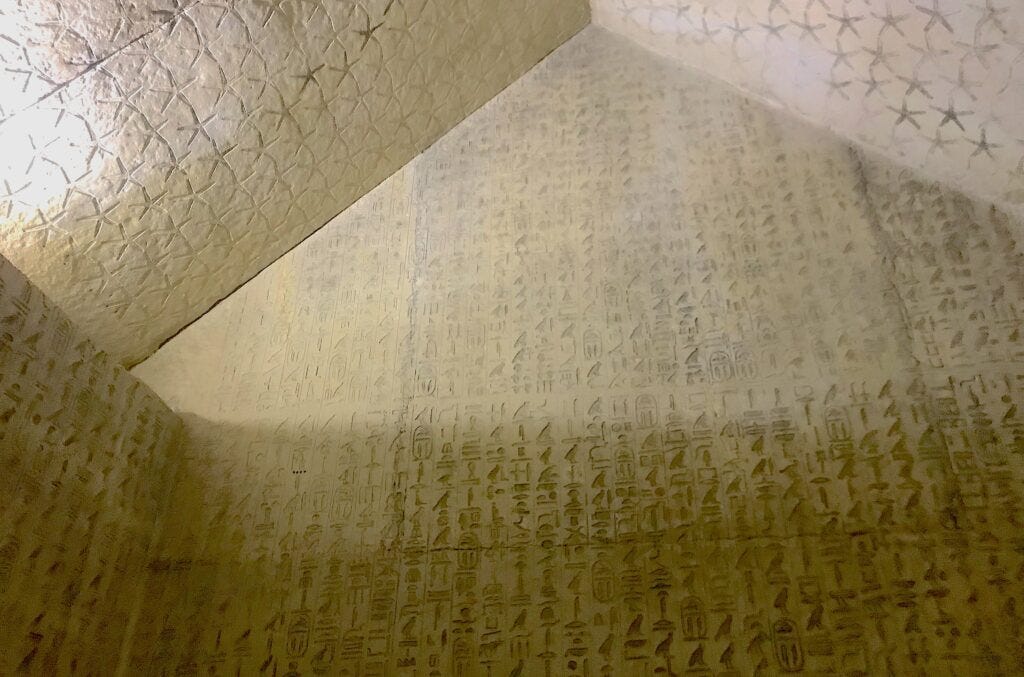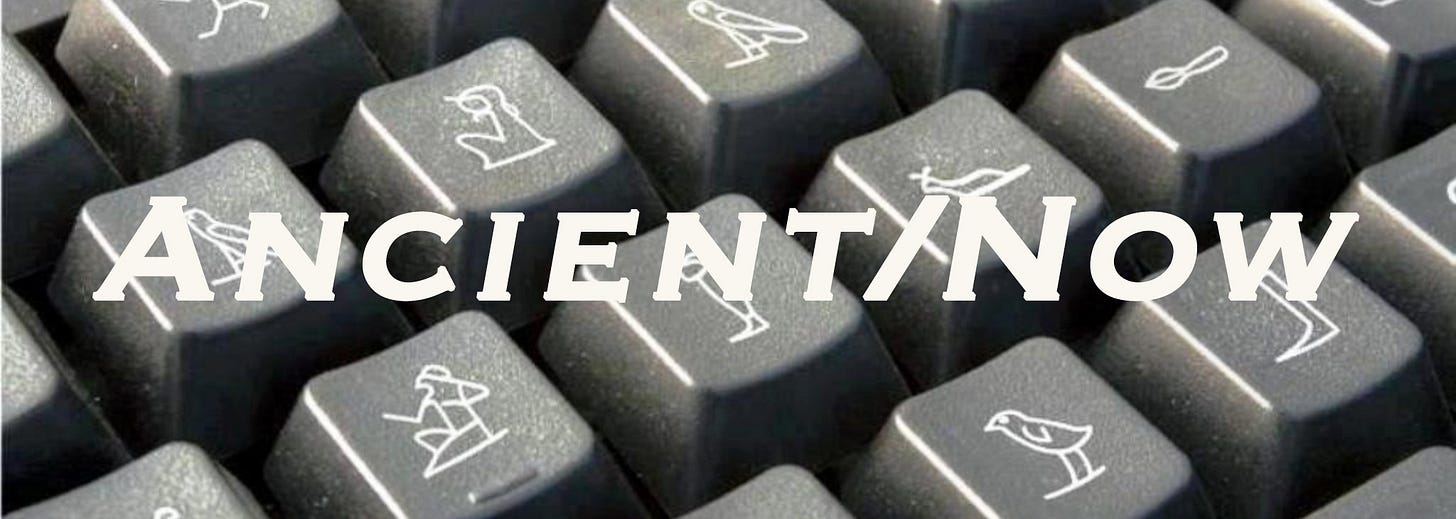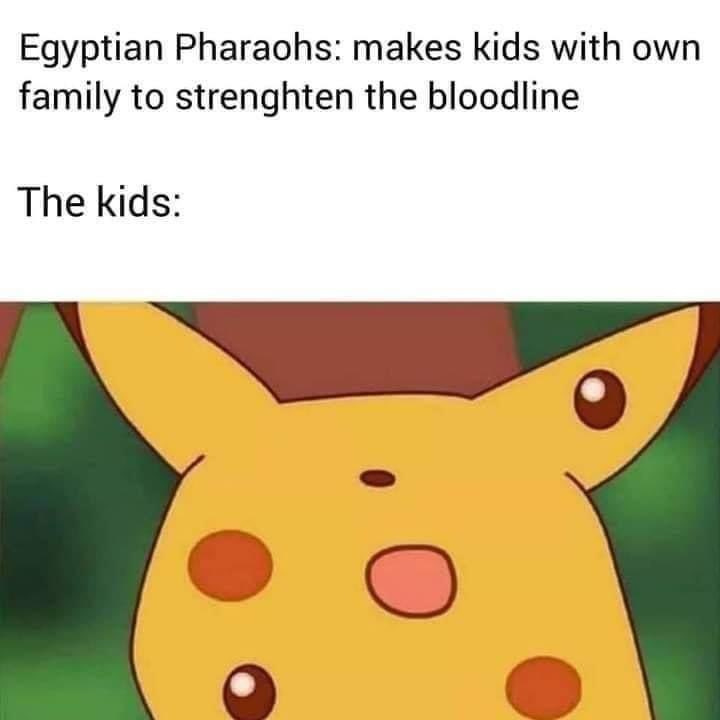Ancient/Now - October 11th
The Pyramid Texts and the evidence for the ancient Egyptians’ use of meteoritic iron
“Iron of the Sky”—the ancient Egyptian understanding of meteoritic iron

You thought the Pyramid Texts were written in the Bronze Age, right? (Or maybe you don’t think in such patriarchally assigned money-eras, and good on you!) But these first religious texts are obsessed with another metal—iron. But how can this be? Archaeological evidence suggests that ancient Egyptians began smelting iron ore 2,600 years ago, not 4,600 years ago when the transformational spells for the king’s revivification were being chanted in the pyramid burial chambers of Dahshur and Giza. And crazily enough, the oldest iron objects found in Egypt actually date to approximately 5,300 years ago—well before the Iron Age. So where were the ancient Egyptians getting iron before they had the technology to make it themselves?
Meteorites. Big fat pieces of metal that fell from the sky. That’s right: just like in that movie Thor but not with a hammer.
In a recent essay for Sapiens, Egyptologist and archaeologist Victoria Almansa-Villatoro discusses the evidence for the ancient Egyptians’ use of meteoritic iron and the textual evidence proving they understood these iron-rich meteorites to have come from the sky. Dr. Almansa-Villatoro examined the Pyramid Texts specifically, which contain the oldest textual references to “iron” (bjA n pt, “metal of the sky”). The Pyramid Texts, carved into the stone walls of the pyramids of some Old Kingdom kings to provide them with religious magical protection on their journey to the afterlife, are over 4,000 years old, and they help us understand the ancient Egyptian conception of the cosmos. Dr. Almansa-Villatoro argues they also provide evidence that the ancient Egyptians understood meteoritic iron’s celestial origins. She argues:
The inscriptions present the sky as an iron bowl containing water, pieces of which can fall to Earth as meteorites or rain…Hieroglyphs provide a nuance of iconicity that is lost in modern translations.
In the Pyramid Texts, the word for iron is written with a hieroglyph that represents a hemispherical container of water—how the Egyptians perceived the sky. Iron and sky are interchangeable in the texts, which is why passages describe the dead sailing the iron and the king needing to break an iron barrier to reach the sky.
How did the Egyptian’s conceptualize the earth sky divide? What was the relationship between birth, the afterlife, and iron? And what about Tutankhamen’s meteoritic iron dagger, which is really cool and way cooler than his solid gold dagger? If you would like to know more about Dr. Almansa-Villatoro’s research on iron and meteorites in ancient Egypt, check out Episode #40 of Afterlives of Ancient Egypt. Kara and Jordan interviewed Dr. Almansa-Villatoro about her path into academia, her research interests on the Egyptian language, and took a deep dive into one of her publications, "The Cultural Indexicality of the N41 Sign for bj3: The Metal of the Sky and the Sky of Metal" (2020). Complex societies always ideologize valuable commodities, particularly metals. Meteoric iron was nothing less than a miracle personally bestowed upon the powerful in Egyptian society by the gods.







